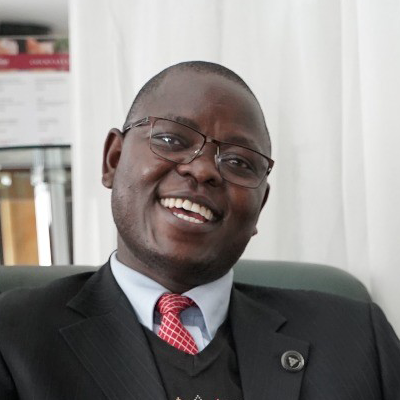
A System-level Challenge
by Christian Wu
Student at Brown University | LEED Green Associate
I still remember my first snowfall. I mean, who doesn’t?
I still remember my surprise as the first speck danced before my eyes. It waved a friendly hello as it drifted toward the ground. I still remember looking up in awe, watching as millions of little white flakes just like it tumbled from the sky. I still remember waking up to a fine layer of powder that seemed to stretch into eternity, and helping my father clear the windshield before heading out for groceries.
And I still remember the horror I felt, knowing: this was late summer, 2018. The sky was an apocalyptic shade of orange. And the snow wasn’t snow.
It was ash.
California’s 2018 wildfires set new state records (until 2020, at least), and came on the heels of a record-breaking heat wave and the continuation of the state’s historic drought. Of course, I stayed indoors through it all, sheltering myself from the heat and the dangers of poor air quality. But as I watched news reports highlighting stories of those who couldn’t, it hit me: I was one of the lucky ones. Many people didn’t have the resources or capacity (or privilege) to escape as I had — and it became clear that as the effects of climate change became more evident, these same underserved and marginalized communities would be the ones suffering the consequences. I came to realize that the fight for climate action is deeply rooted in the fight for social justice, and that no solution nor system can be considered complete without addressing both sides of the issue. And nowhere is this more true than in our efforts to decarbonize the built environment.
When it comes to the intersection of embodied carbon and social equity, a few key values come to mind: 1) the need for conscious consumption and distribution of resources, especially on a global scale; 2) consideration of the impacts of materials processing, energy generation, water use, and waste streams on surrounding communities and ecosystems; and 3) the overall acknowledgment that social and environmental health are interdependent.
Though we herald ourselves as champions of both climate action and social justice, however, we don’t always apply these ideas fully in our design and construction practices.
Why do we claim to design spaces to improve inhabitant health, yet consume materials in a way that places outsized burdens on people elsewhere? Why do we normalize the complete demolition of interior spaces during fit-outs when most furniture and materials have expected life spans well beyond the terms of a lease? Why do we turn old buildings into waste just to make space for efficient new construction, then pat ourselves on the back for the supposedly “neutral” life-cycle impact we’ve left on the environment? Do we continue these practices because we truly believe this is the way to build a more sustainable and equitable future? Or is this simply the way we’ve always done it? In our struggle to radically reduce embodied carbon emissions, we must also address the failures of our current systems and question our approach to resource consumption and waste. Specifying low-embodied carbon and conducting life cycle analyses isn’t enough. We need to engage with this challenge on a deeper level.
The most meaningful step we can take towards decarbonization is quite simple: we need to embrace and prioritize reuse in every stage of a building’s life cycle. On an intuitive level, upcycling and reuse helps minimize waste and pollution, circulate existing products, and reduce the consumption of new materials — all of which result in significant reductions in embodied carbon and tip the scale towards a more balanced distribution of resources. After all, why waste time and energy destroying and replacing used products and components when they still have value? Moreover, we already have many of the strategies we need to construct these circular frameworks; we just need to standardize and adopt them at scale. We can encourage and teach our architects and designers to design for deconstruction, employ material passports, avoid whiteboxing spaces, choose biogenic materials, and more! We just have to choose to do so.
In many ways, the obstacles we’re trying to surmount are not related to cost or complexity, but rather core values that are woven into the very fabric of our culture and taught to us from birth. It’s incredibly disheartening to see how Western consumerism has created a culture where we hold ‘fast’, ‘new’, and ‘more’ above all. This is especially true for my generation, which has never known any other world. Maybe it’s time we challenged these ideals.
So let’s do away with the “more is better” mindset of our predecessors and revalue our world through the lens of reuse. Let’s unite in our dreams for a brighter tomorrow, and design a world with health and longevity at the forefront. Let’s reimagine the built environment not just as a collection of single-use structures, but as a harmonious system that deconstructs the old to serve as the building blocks for the new. If we truly hope to bring about justice, equity, and transformative climate action, we must change — before it’s too late. This much we owe, to ourselves, to our children, to each other, and to the billions of people who will never have a say in how we proceed but will face the consequences nevertheless.
I don’t want to apologize to my children for failing them.
I want them to see real snow.
We have the heart and the ability, so please, let’s do the right thing.
“Let’s do away with the ‘more is better’ mindset of our predecessors and revalue our world through the lens of reuse. Let’s unite in our dreams for a brighter tomorrow, and design a world with health and longevity at the forefront. Let’s come together and reimagine the built environment not just as a collection of single-use structures [in essence], but as a harmonious system that deconstructs the old to serve as the building blocks for the new.”

Christian Wu
Christian is an architecture student at Brown University on a personal mission to decarbonize the built environment. He is interested in facilitating circular building practices (both in new construction and retrofits), especially through the lens of design for deconstruction (DfD) and materials and product salvaging/reuse. He hopes to drive discourse and change in sustainability related to the built environment, and help create a healthy, sustainable, and equitable future.
Note: Do you have an idea for a VIEWPOINT post? Envíanos un correo electrónico. Views expressed in a VIEWPOINT post are those of the author, and do not necessarily represent the views of the Carbon Leadership Forum or its staff.






